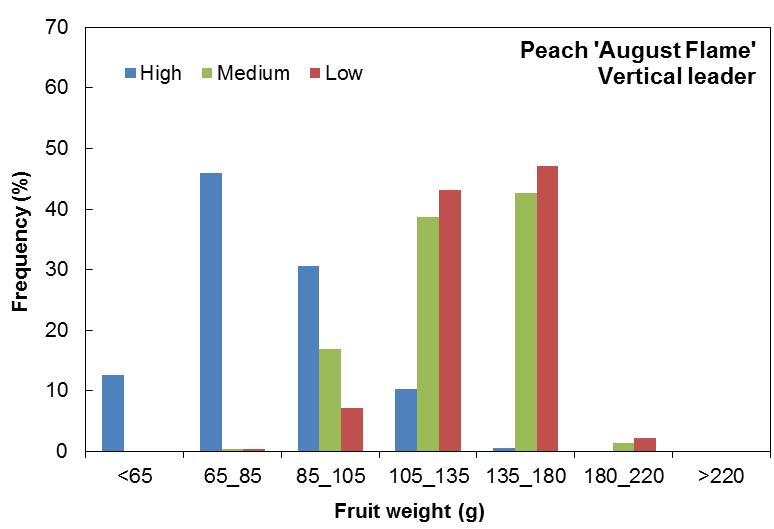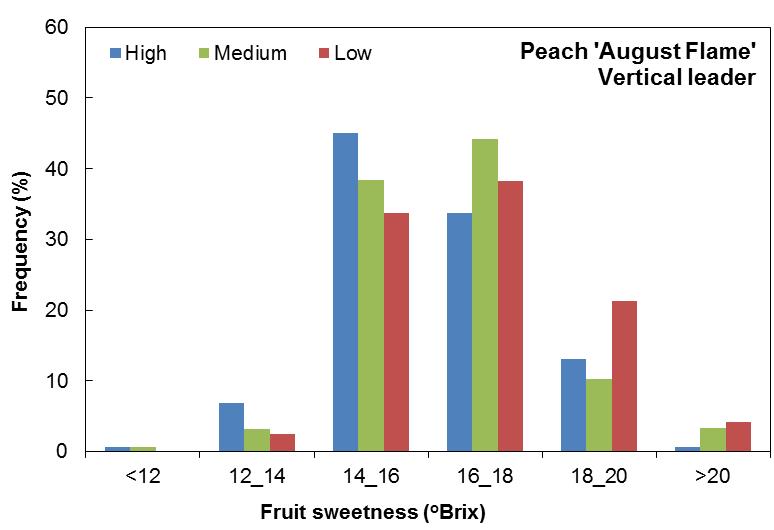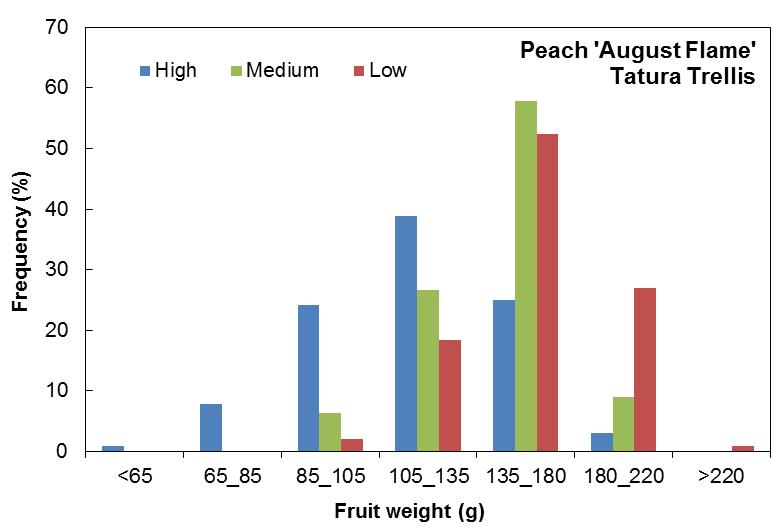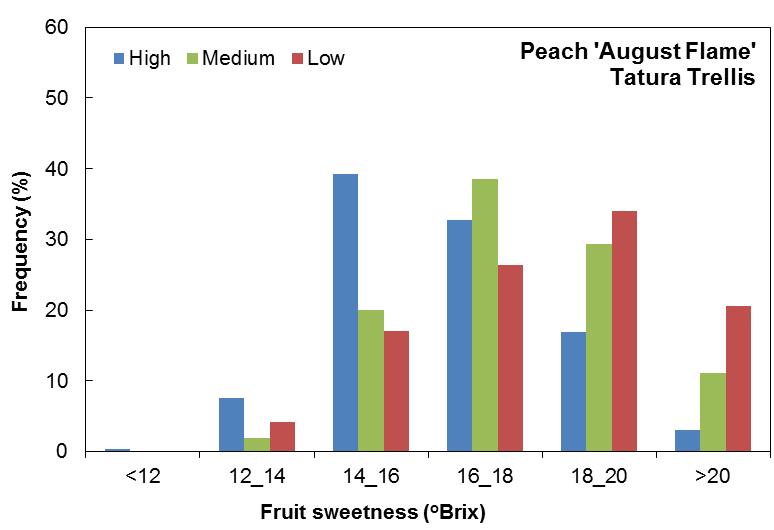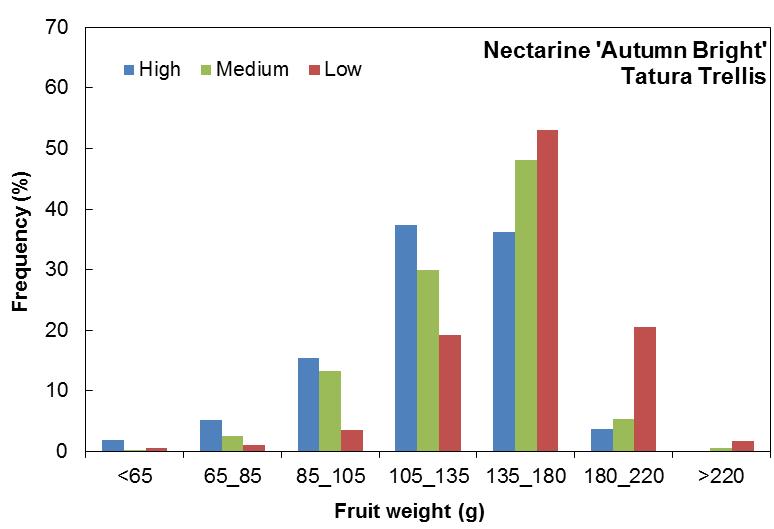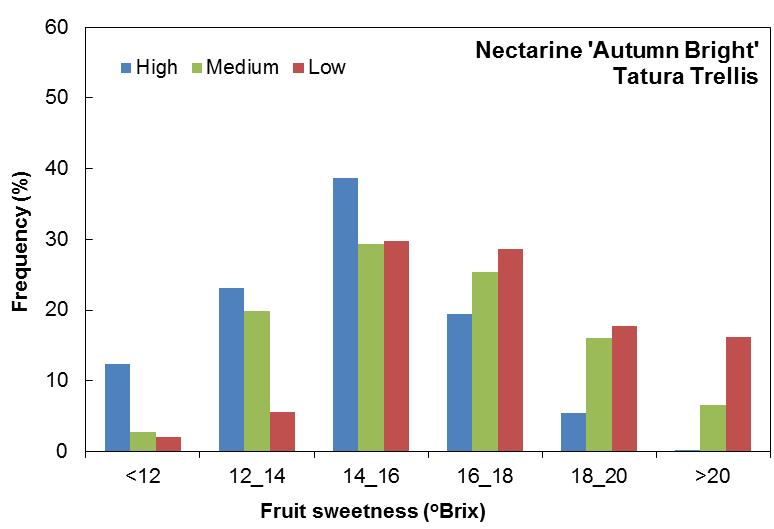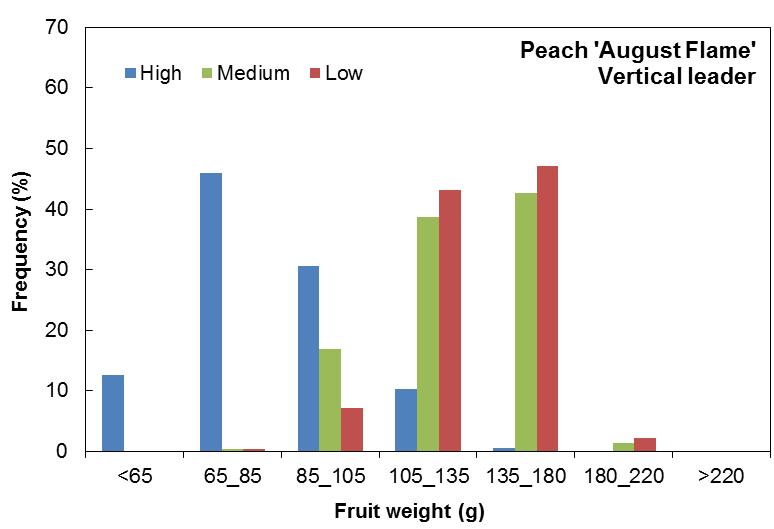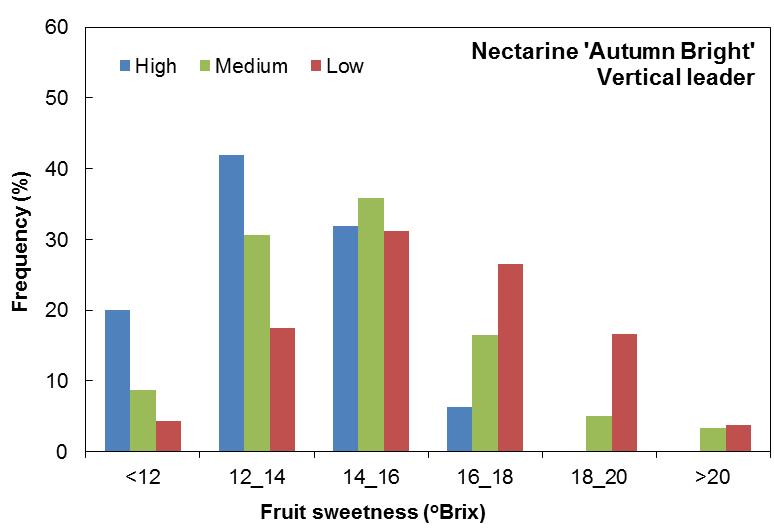2019 Plum, Apricot, Peach and Nectarine Results
Plum
Video: stonefruit cropload experiments on Plum Angeleno - Tatura trellis versus vase
- 'These plums have high sweetness, high brix values around the 17-18 brix, irrespective of canopy system or crop load.'
- 'The crop load treatments we've had on these trees have also impacted the yield, fruit size and fruit quality outcomes.'
- 'Tatura trellis trees are basically larger trees. They've got bigger canopy, higher lighting interception and that gives them the ability to carry a greater fruit number and hence greater yields.'
Video transcript: stonefruit cropload experiments on Plum Angeleno - Tatura trellis versus vase
I'm standing in the summer fruit experimental research orchard here at Tatura, and beside me we have plum crop load experiments where we're comparing Tatura trellis system under a high density system, next door with the vase, high density, freestanding trees. Angelino is the cultivar and we've been looking at different crop loads, different fruit number per tree, and then impact on yield, fruit quality. The tree density is exactly the same. They're both one metre tree spacing on a 4.5 metre row spacing. Both micro-irrigated through in line drip. Over the last two to three seasons we've been monitoring yield, fruit number and fruit quality. In particular, brix, maturity, firmness, colour etc. We also, during the season, measured light interception and trunk size and other vegetated indicators, as well as the tree performance in terms of yield and quality. The Tatura trellis trees are basically larger trees. They've got bigger canopy, higher lighting interception and that gives them the ability to carry a greater fruit number and hence greater yields. The crop load treatments we've had on these trees have also impacted the yield, fruit size and fruit quality outcomes. These plums have high sweetness, high brix values around the 17-18 brix, irrespective of canopy system or crop load.
Apricot
Video: stonefruit cropload experiment on Apricot Golden May - Tatura trellis versus vase
- 'the Tatura trellis intercepts more light. They can support a higher crop load compared to the free standing vase trees.'
- 'In terms of fruit quality, we're getting big differences due to the crop load effect in both canopy systems. It's to do with fruit number. Obviously the crop load is affecting fruit size and then that follows on with effects on the pressures, the firmness for example and the brix.'
Video transcript: stonefruit cropload experiment, Apricot Golden May - Tatura trellis versus vase
I'm standing in the stone fruit experimental orchard here a Tatura. And today I'm going to present some information on the apricot canopy crop load experiments. Beside me we have a Tatura trellis system, canopy system compared to the freestanding vase system. They're both the same tree age, same soil preparation, same root stocks, same tree spacing. And what we've been doing over the most recent years, once these trees reached maturity, we've been varying the crop load, the number of fruit tree. And we've been looking at the yield, fruit size, and in particular fruit quality aspects. So overall we've been comparing tree performance and fruit quality and include things like light interception and biomass from the prunings, the yield, the fruit quality, the fruit size across these two experiments, one on Tatura trellis and one on the freestanding vase. The crop load effects have really been quite prevalent. We've seen huge changes with fruit size. Obviously if you have higher fruit number, the smaller the fruit, but higher the yield, which isn't desirable because we need some minimum standards there. Around about the thirty six grams of fruit, is the base standard in apricot. Light interception wise, obviously the larger the tree, as you can see here with the Tatura trellis intercepts more light. They can support a higher crop load compared to the free standing vase trees. They're both the same age, planting density and other management inputs are the same. In terms of fruit quality, we're getting big differences due to the crop load effect in both canopy systems. It's to do with fruit number. Obviously the crop load is affecting fruit size and then that follows on with effects on the pressures, the firmness for example and the brix. Overall though we're getting around the 9 to 12 brix in this cultivar.
Peach and Nectarine
Effects of low, medium & high crop load treatments on Fruit Weight and Brix
Project acknowledgement
This research (SF12003 Increased stone fruit profitability by consistently meeting market expectations; SF17006 Summerfruit Orchard Phase 2) was funded by Agriculture Victoria with co-investment from Horticulture Innovation Australia Limited using the Summerfruit levy and funds from the Australian Government.
